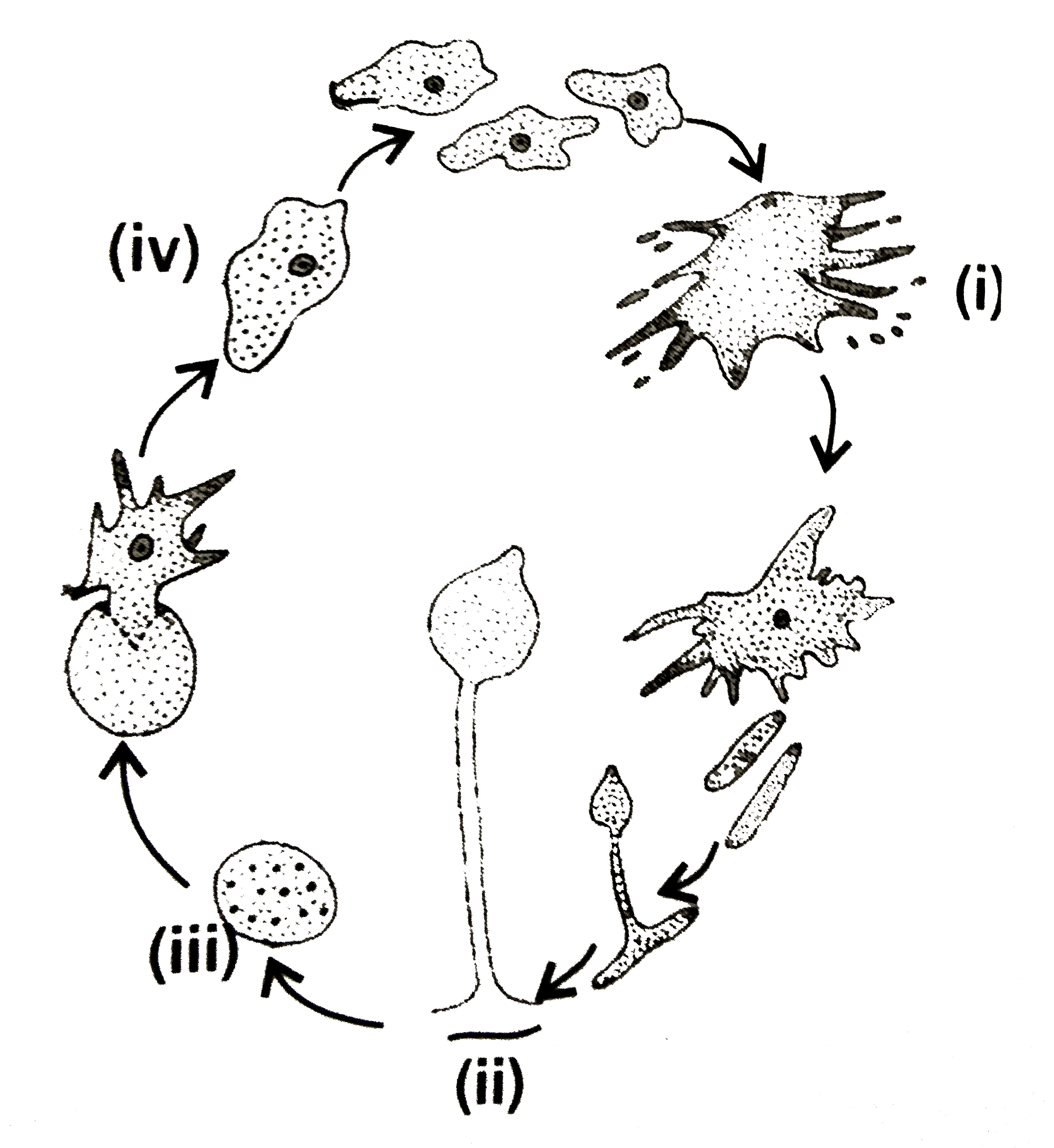In the life cycle of cellular slime moulds, there is complete absence of
pseudopodia
sporangia
anisogametes
flagellated cells .
The correct Answer is:D
To answer the question regarding the life cycle of cellular slime molds and what is completely absent, we can follow these steps:
1. Understanding Cellular Slime Molds:
- Cellular slime molds are a group of protists that belong to the kingdom Protista. They are known for their unique life cycle, which includes both unicellular and multicellular stages.
2. Identifying Key Features:
- In the life cycle of cellular slime molds, certain structures and reproductive forms are present, such as pseudopodia and sporangia.
3. Analyzing the Options:
- Pseudopodia: These are extensions of the cell membrane and cytoplasm that help in movement and feeding. They are present in cellular slime molds.
- Sporangia: These are structures that produce spores and are also present in the life cycle of cellular slime molds.
- Anisogametes: These are gametes of different sizes and are involved in sexual reproduction. They are present in some protists.
- Flagellate Cells: These are cells that possess flagella for movement.
4. Determining the Absence:
- Among the options provided, flagellate cells are the only structures that are completely absent in the life cycle of cellular slime molds. They do not utilize flagella for movement or reproduction.
5. Conclusion:
- Therefore, the correct answer to the question is that there is a complete absence of flagellate cells in the life cycle of cellular slime molds.
Final Answer:
The correct answer is flagellate cells.
---
- Cellular slime molds are a group of protists that belong to the kingdom Protista. They are known for their unique life cycle, which includes both unicellular and multicellular stages.
- In the life cycle of cellular slime molds, certain structures and reproductive forms are present, such as pseudopodia and sporangia.
- Pseudopodia: These are extensions of the cell membrane and cytoplasm that help in movement and feeding. They are present in cellular slime molds.
- Sporangia: These are structures that produce spores and are also present in the life cycle of cellular slime molds.
- Anisogametes: These are gametes of different sizes and are involved in sexual reproduction. They are present in some protists.
- Flagellate Cells: These are cells that possess flagella for movement.
- Among the options provided, flagellate cells are the only structures that are completely absent in the life cycle of cellular slime molds. They do not utilize flagella for movement or reproduction.
- Therefore, the correct answer to the question is that there is a complete absence of flagellate cells in the life cycle of cellular slime molds.
The correct answer is flagellate cells.
Topper's Solved these Questions
Similar Questions
Knowledge Check
Study the given life cycle of cellular slime moulds and select the incorrect option.
 P. Structure (i) is formed in response to drought conditions and exhaution of food supply.
P. Structure (i) is formed in response to drought conditions and exhaution of food supply.
Q. Structure (ii) represents myxamoeba, which rounds off and is converted to a spore.
R. (iii) are uninucleate, haploid sturctures without any cell wall.
S. (iv) are uninucleate, haploid structures possessing a conspicuous xwll qLL.AP and QBR and SCP,Q and SDQ,R and SSlime moulds are considered to be
Aprimitive protistsBproducersCconsumers and decomposersDprimitive protozoans
Slime moulds are
View SolutionAn acellular slime mould is
View SolutionThe structure formed in the life cycle of cellular slime-mould due to chemotactic movement is
View SolutionIn acellular slime moulds, meiosis occurs inside
View SolutionSpore producing body of a cellular slime mould is
View SolutionSlime moulds belong to
View Solution
